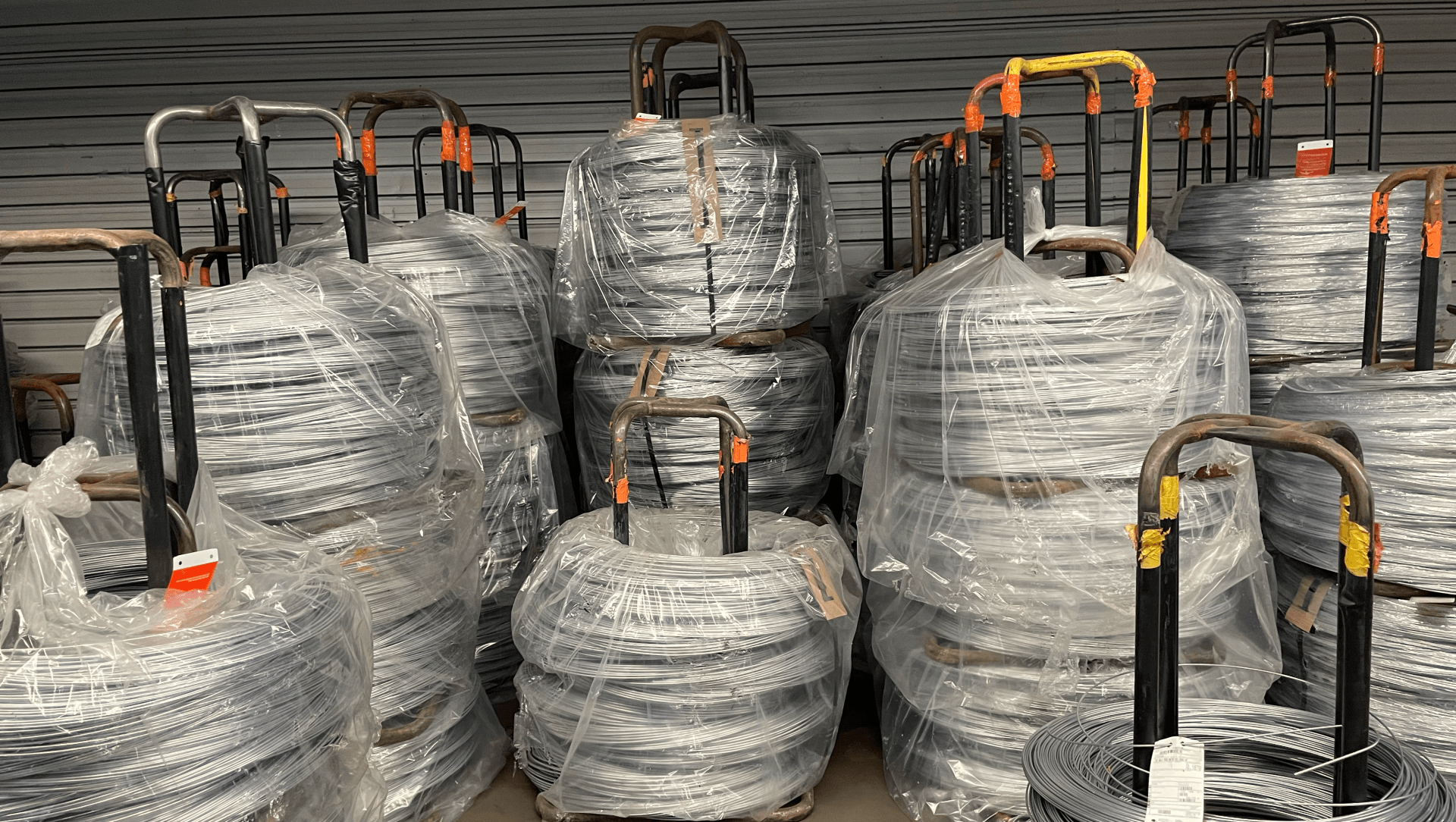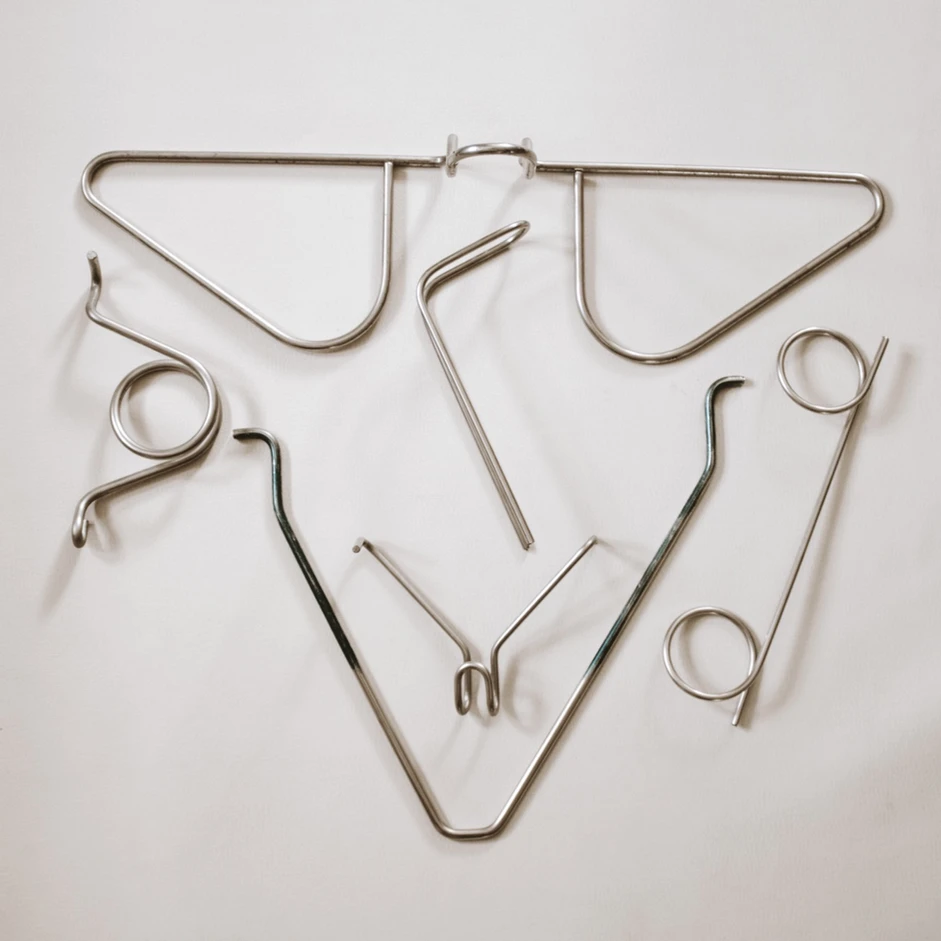Wire Forming: What It Is, How It Works, Where to Get It, & More!
Wire Forming
Wire forming is a precision technique used to mold straightened wire into distinct and captivating shapes and designs. Below are some highlights of the process:
Wire forming plays a crucial role in various manufacturing activities, such as automobile production, food production, shipping and handling, and medical equipment manufacturing.
The process of wire forming incorporates a diverse range of metals like steel, stainless steel, aluminum, copper, brass, and various alloyed metals.
There is a range of equipment available for wire forming, from manual crafting techniques to advanced CNC programmable machines.
In this article, we’ll dive deeper into the wire forming process and techniques, types of wire forming, and how we can help at Vogan Manufacturing Inc., your go-to wire forming shop. We have the expertise, equipment, and interest it takes to get your order completed effectively and efficiently, giving you a wonderful finished product and overall experience.
If you have any questions about a prospective project or an existing order, don’t hesitate to reach out!
What Is Wire Forming?
Wire forming is a technique for changing a straightened wire into different lengths and sizes, tailored for a variety of industries. Before any shapes are formed, the initial wire is coiled and then straightened.
Since wire forms are very pliable, they’re easily transformed into a range of specific shapes and designs, and lend themselves to an array of projects. This explains why wire forming has been around for so long, dating back to The Bronze Age.
There are many different equipment types used for wire forming, including conventional equipment that requires manual labor, semi-autonomous equipment, and fully automated devices.
How Are Wire Forms Made?
Wire forms are made using processes like bending, extrusion, upsetting, and twisting, to name a few. Wire form manufacturers also use techniques like CNC wire bending, manual wire forming, and fourslide stamping.
To be sure, there’s no shortage of processes and techniques when it comes to wire forming, and we at Vogan Manufacturing Inc. employ many of these when creating your custom project.
Wire Forming Processes
Bending—the introduction of an angle to a straightened wire—is the most common process in wire forming, allowing for the creation of three-dimensional shapes. However, in addition to bending there are numerous other wire forming processes, including:
- Extrusion: The wire is carefully manipulated by exerting pressure as it is passed through a smaller opening than its own diameter.
- Upsetting: The wire is widened and shaped through axial direction compression
- Twisting: The act of twisting wires allows for the combination of various lengths, the formation of precise shapes, and the utilization of springback forces.
- Stamping: The wire is threaded through a stamping press that utilizes specialized forming tools known as dies to manipulate and mold the part.
These are just a sampling of the processes manufacturers use. Some others include welding, chamfering, and weaving.
Wire Forming Techniques
By and large, wire forming machines are either manually or automatically operated. Over the years, wire forming manufacturers have innovated various tools and techniques to increase efficiency and create more advanced wire form parts, such as:
- Manual Wire Forming: As the name suggests, manual wire forming is done by a person by hand, without any tools. Usually, hand levers and spindles are used for this method.
- Coil Wire Forming: Coil, also known as spring wire forming, is the process of wrapping wire around a metal blank.
- Roll Wire Forming: Roll forming is a highly efficient technique for manufacturing wire parts in various shapes, including flat and round forms.
- Pneumatic Wire Forming: Wire is efficiently guided into the straightening machine where it is shaped to the desired form and then pneumatically cut to the correct length.
Similar to wire forming processes, these are just some of the techniques used for wire forming. Others include
CNC wire bending and hydraulic wire forming.
Examples of Wire Forming
So, what is an example of wire forming? The possibilities for wire shapes, configurations, and forms are infinite as new ones are consistently being created. Wire forming allows for the production of any conceivable shape, from complex three-dimensional designs to basic hooks and springs. A wide range of products utilize wire forming in some capacity.
Below are some examples:
- J Hook: These hooks offer both material protection and hangability. With their notched design, they can easily be hung in place. Plus, the Double J hooks have an impressive load-bearing capacity when attached to a strap.
- S Hook: The S hook is designed with both ends bent to create its distinctive S shape. This versatile hook is commonly used for hanging storage and organizing cables and cords to ensure safety.
- Springs: Springs are the most prevalent and widely employed type of wire form. They are essentially coils that have been tightly wound into a spiral shape to meet specific tension needs. The selection of a particular type of spring is based on its intended use and application.
- Linchpins: Vital components, linchpins are placed at the end of an axle to ensure the wheels remain securely in place. They’re fabricated using different materials such as aluminum, zinc, brass, and stainless steel.
Other types of wire forms are utility hooks,
powder coating hooks,
d rings, and wire guards.
What Are Wire Forms Used For?
What are wire forms used for? A whole lot! For instance, here at Vogan Manufacturing Inc., we service a number of industries, such as:
Construction: Brackets and clips- Medical: IV hooks; coat hangers
- Industrial: Handles
- Agriculture: Dairy equipment
- Display: Ornamental designs
Additionally, we are able and eager to help with any projects you have on the horizon by creating custom parts for you. No matter what project you have in mind, we can create the ideal part to meet your needs!

Materials Used in Wire Forming
A slew of metals are used in wire forming, with the most common being stainless steel and steel. Some more examples include:
- Galvanized Wire
- Brass Wire
- Copper Wire
- Aluminum Wire
- Bright Basic Wire
As you can see, there are a host of potential materials to choose from when wire forming. The choice of material depends on the specific requirements of the wire forming project. Different materials offer different properties and characteristics, allowing for versatility in various applications.
The Finest in Wire Forms Since 1979
Now you know more about wire forming and more about us at Vogan Manufacturing Inc. We have knowledgeable and friendly staff to assist with your wire forming needs—no matter the scale of the project. Whether you have a small request or a large one, we’ll handle it with top-notch attention to detail and professionalism.
We also have years of combined experience as well as the premium equipment necessary to make your vision a reality. Please let us know if you have any questions or would like to place an order.
All Rights Reserved | Vogan Manufacturing Inc.




